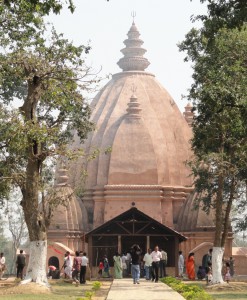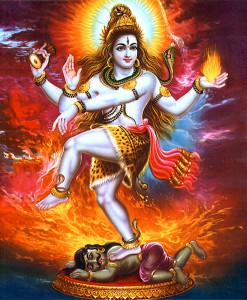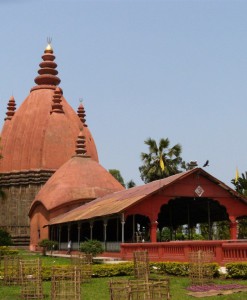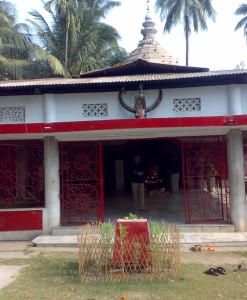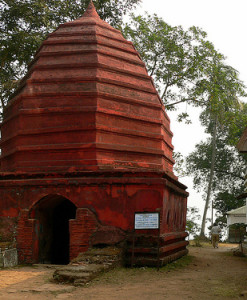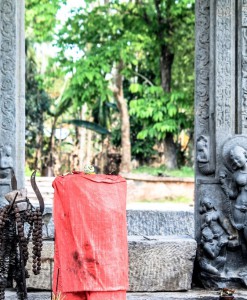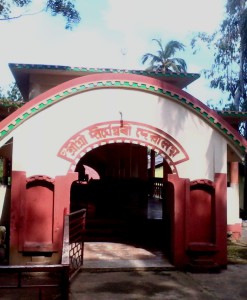No products in the cart.
The Negheriting Temple (Doul) is dedicated to Lord Shiva. The actual temple is dated 8th-9th A.D (Pre Ahom) built by the Kacharis. The present form of the temple was constructed under the reign of Ahom king Swargadeo Rajeswar Singha(1751-1769) in the later part of the 18th Century, after the original structure was devastated by natural calamities. The temple is also known as “The Panchayatana Temple” as the main Temple (Shiva) is surrounded by four corner shrines/Doul dedicated to Lord Vishnu, Lord Surya, Lord Ganesh and Goddess Durga. A famous architect, Ghanasyam Khonikar, was given the responsibility of building the temple.
Negheriting Shiva Doul, Dergaon;
As per the historical records Negheriting Shiva Doul was first built by the Kacharis in the 8th – 9th century A.D. However, the natural calamities caused much destruction to the temple. Thus, in 1687 it was re-built by Swargadeo Rajeswar Singha, the Ahom king. The construction duty was relegated to the famous architect Ghanashyam Khonikar. It is said that the stones employed for building the temple was gathered from banks of the Dihing River. The temple remains were discovered from the Gajapanemara forest. Later during 1439-1488 another Ahom king Susenphaa built the shrine on the former construction and installed the Shivalingam there. However, when Dihing River changed its course the temple was again destroyed. Much later an ardent devotee of Lord Shiva discovered the ruins of the temple and the Shivalingam submerged in the shallow waters of the river. The place is currently referred to as Sheetal Negheri. The Ahom king Rajeswar Singha (1751-1769) then finally recovered the lingam from the river and reconstructed the present temple re-established the lingam.
The main temple is surrounded by four other temples namely the Bishnu, Ganesh, Surjya and Durga temple. A Banalinga of 3 feet in diameter is established in the main temple. According to legend a Rishi named Urba wanted to establish a second Kashi right on this place for which he collected lots of Shiva lingas there.
By Road: The Temple is very well connected by roadways to all the places of Assam. The National Highway 37 (India) passes through the Temple.
By Rail: Baruah Bamun Gaon is the nearest rail head, which is 10 kilometres away.
By Air: The nearest airport is at Jorhat, which is 22 kilometres away.
A priest named Bhudhar Agamacharji was appointed by King Rajeswar Singha for proper maintenance of the temple and also for the rituals to be performed. The Agamacharji family still performs worship and other maintenance works regularly. Customs of performing songs and dances called Deonati were prominent there in the temple.
The most important festival celebrated in this temple is Mahashivaratri, which falls in the month of Phagun, a fortnight before Holi (usually a moonless night in February or March). Mahashivaratri is a celebration of the union of Lord Shiva with Parvati. On this day, thousands of devotees come to offer fruits, flowers and bel leaves on the Shivalingam.



